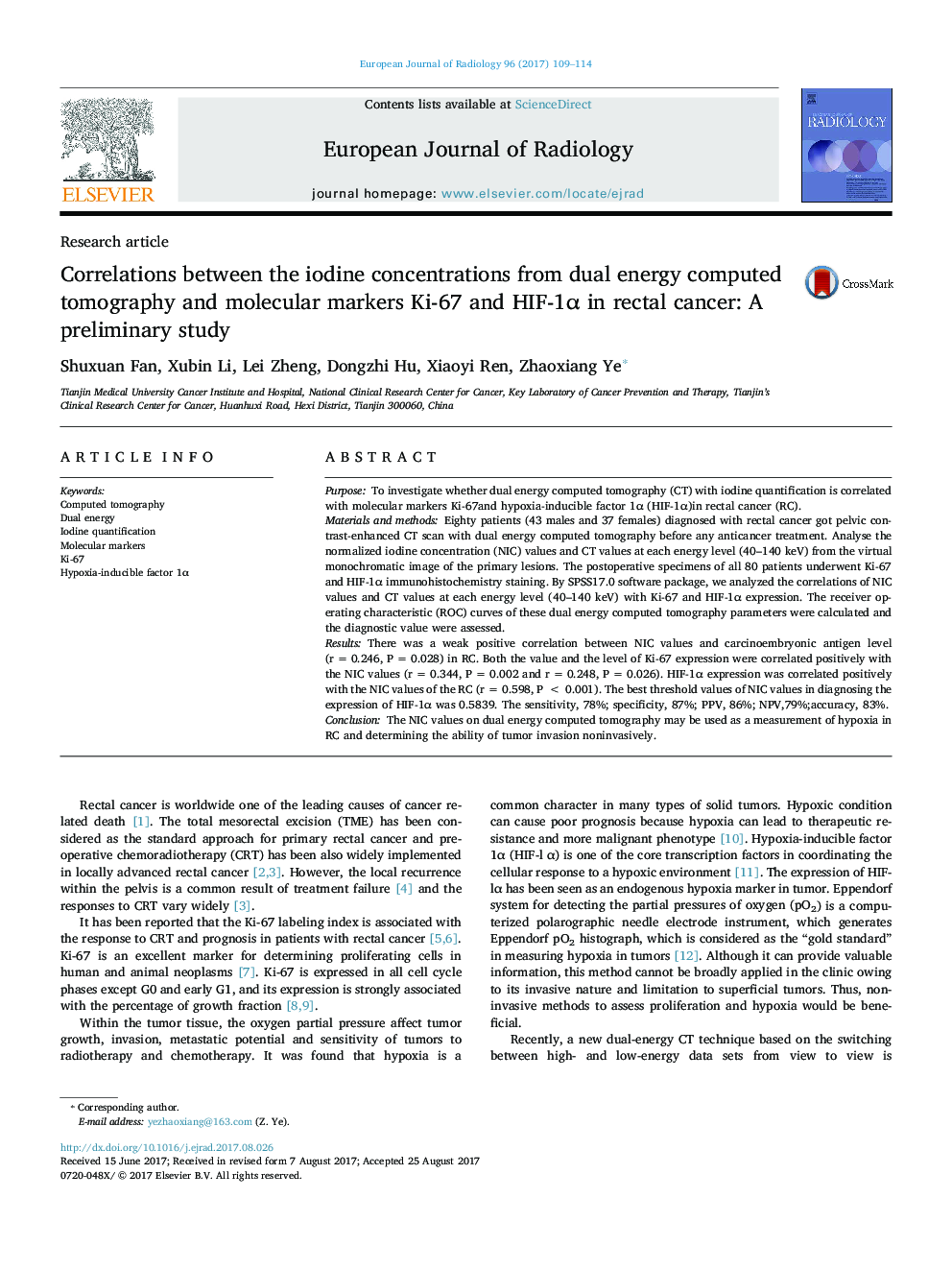| Article ID | Journal | Published Year | Pages | File Type |
|---|---|---|---|---|
| 5726203 | European Journal of Radiology | 2017 | 6 Pages |
PurposeTo investigate whether dual energy computed tomography (CT) with iodine quantification is correlated with molecular markers Ki-67and hypoxia-inducible factor 1α (HIF-1α)in rectal cancer (RC).Materials and methodsEighty patients (43 males and 37 females) diagnosed with rectal cancer got pelvic contrast-enhanced CT scan with dual energy computed tomography before any anticancer treatment. Analyse the normalized iodine concentration (NIC) values and CT values at each energy level (40-140 keV) from the virtual monochromatic image of the primary lesions. The postoperative specimens of all 80 patients underwent Ki-67 and HIF-1α immunohistochemistry staining. By SPSS17.0 software package, we analyzed the correlations of NIC values and CT values at each energy level (40-140 keV) with Ki-67 and HIF-1α expression. The receiver operating characteristic (ROC) curves of these dual energy computed tomography parameters were calculated and the diagnostic value were assessed.ResultsThere was a weak positive correlation between NIC values and carcinoembryonic antigen level (r = 0.246, P = 0.028) in RC. Both the value and the level of Ki-67 expression were correlated positively with the NIC values (r = 0.344, P = 0.002 and r = 0.248, P = 0.026). HIF-1α expression was correlated positively with the NIC values of the RC (r = 0.598, P < 0.001). The best threshold values of NIC values in diagnosing the expression of HIF-1α was 0.5839. The sensitivity, 78%; specificity, 87%; PPV, 86%; NPV,79%;accuracy, 83%.ConclusionThe NIC values on dual energy computed tomography may be used as a measurement of hypoxia in RC and determining the ability of tumor invasion noninvasively.
